Ohio History Museum Center

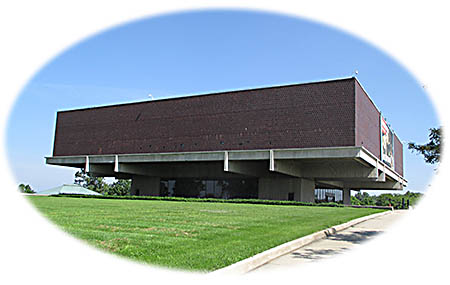
Ohio History Museum Center
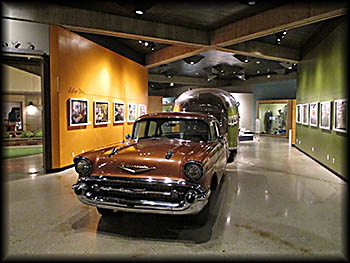
This is one of the livelier
corridors in the museum.
corridors in the museum.
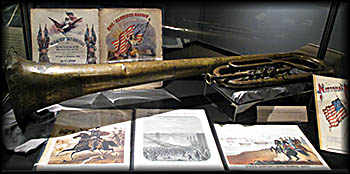
This bass baritone horn
was used in the Civil War.
was used in the Civil War.
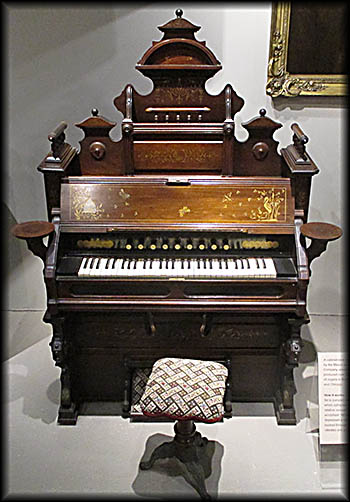
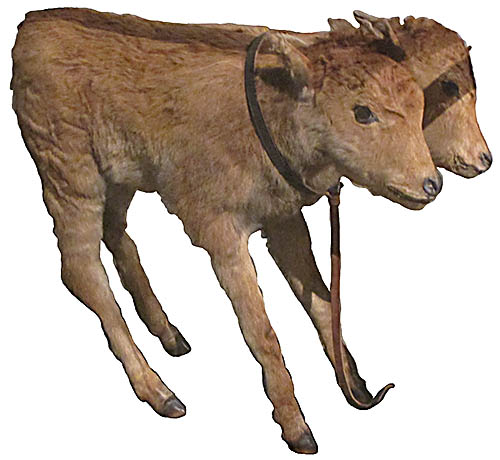
This two-headed cow is one of the odder artifacts (if you can call it that) on display which children seem to love.
Thousands of cars, a surprising number of them antiques, made their way toward the Ohio History Center Museum, making me wonder just what special event it had planned for the day that could generate such passionate interest. The police directed the duel lines of cars onto a street where we passed through a ticket window at which my travelling companion and I paid $6 for the privilege of parking at the Mapfre Stadium, used for soccer games but closed that day. By the time I found an open spot, it had become painfully clear we hadn’t parked for the Ohio History Center Museum as we’d planned, but rather for something completely unrelated.
From where we parked spot I could just see the museum with a pair of binoculars, although I’m sure a telescope powerful enough to view the moons of Jupiter would have worked better. No matter. The road down which we’d come was one-way just now, so there was no going back to park in the museum’s own lot. To get to the museum we walked at least a third of a mile, and while it was lengthy, it didn’t go too bad. The cars around us moved so slowly little danger of being hit existed.
Once at the museum, we paid a modest entrance fee. Most of the exhibits reside on the first of its three floors, and outside is Ohio Village, an example of a Civil War-era town. I asked the fellow who sold me my ticket what was going on next door. He said it was a “Good Guys” event, which enlightened me not at all. Looking into this when I sat down to write this travel log, I learned that these “Good Guys” and their events are done by the Goodguys Rod & Custom Association, a company that puts on drag races, and when I visited the museum they had a show going on at the Ohio Expo Center that included showcasing antique cars.
Once at the museum, we paid a modest entrance fee. Most of the exhibits reside on the first of its three floors, and outside is Ohio Village, an example of a Civil War-era town. I asked the fellow who sold me my ticket what was going on next door. He said it was a “Good Guys” event, which enlightened me not at all. Looking into this when I sat down to write this travel log, I learned that these “Good Guys” and their events are done by the Goodguys Rod & Custom Association, a company that puts on drag races, and when I visited the museum they had a show going on at the Ohio Expo Center that included showcasing antique cars.
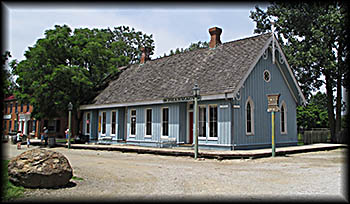
Organ
House in Ohio Village
In 2009–2010, the Ohio legislature eviscerated the Connection’s funding by a staggering forty-two percent, forcing it to layoff employees and shutter sites. In the 2015–2017 state budget, it will receive a miserly $10 million, which one Ohio conservative think tank, The Buckeye Institute, thinks is nothing more than “government advocacy and philanthropy.” Nice people, those. They also hate art, teachers, libraries, and anyone and anything else that might inadvertently cause people to think critically and appreciate culture.
Although I had never visited the museum, it didn’t take a genius to conclude it has seen better days. I didn’t know about its funding situation (or lack therefore) before arriving, but it took me little time to deduce things are not well here. Many of the exhibits look as if they had not been touched in a very long time. A worn look pervades, making everything seem a bit depressing. Many of the museum’s exhibits seem somehow barren, as if other things could be shown but are not. Despite this, it contains enough artifacts and exhibits to keep you occupied for a couple of hours. And if you bring children, don’t worry, they won’t get bored: a number of interactive things are here for them, and (gasp!) they maybe learn something while doing them.
The museum contains a number of galleries with different themes, including ones dedicated to natural history, Ohio Native American history and prehistory, and Ohio’s history through artifacts. In Gallery 2 (1950s: Building the American Dream), one will find a Lustron home, an all-steel prefabricated house produced by the Strandlunds Lustron Company, which began business in 1947 and went bankrupt in 1950, producing a mere 25,000 homes in that time.
Although I had never visited the museum, it didn’t take a genius to conclude it has seen better days. I didn’t know about its funding situation (or lack therefore) before arriving, but it took me little time to deduce things are not well here. Many of the exhibits look as if they had not been touched in a very long time. A worn look pervades, making everything seem a bit depressing. Many of the museum’s exhibits seem somehow barren, as if other things could be shown but are not. Despite this, it contains enough artifacts and exhibits to keep you occupied for a couple of hours. And if you bring children, don’t worry, they won’t get bored: a number of interactive things are here for them, and (gasp!) they maybe learn something while doing them.
The museum contains a number of galleries with different themes, including ones dedicated to natural history, Ohio Native American history and prehistory, and Ohio’s history through artifacts. In Gallery 2 (1950s: Building the American Dream), one will find a Lustron home, an all-steel prefabricated house produced by the Strandlunds Lustron Company, which began business in 1947 and went bankrupt in 1950, producing a mere 25,000 homes in that time.
The Ohio History Center Museum is the flagship of the Ohio History Connection, a name that sounds more like a history database than the state’s historical society, which it is. In fact, its name was the Ohio Historical Society until 2014, a far more appropriate appellation I urge it to return to. From the center the Ohio History Connection directs operations throughout the state for the many sites and monuments it oversees. Or what is left of them.
I don’t mind reconstructed or restored historical buildings mixed in with authentic ones, but an entire village of nothing but reproductions smacks of being fake. It is no different than walking onto the set of an Old West town at Universal Studios, where everything looks real but clearly isn’t. Despite this serious quibble, I still liked it. It had few re-enactors there that day—apparently they mainly come on Friday rather than Saturday—but those we met were informative, enthusiastic about the town, and exceptionally happy to interact with visitors.
I have read that for several years the Connection’s lack of funding caused it to shutter the village altogether save for special events, although now it is open daily from Memorial Day to Labor Day plus special events in other parts of the year. It is criminal that it is not open year round. Even though I dislike reproductions, the village nonetheless offers many things that can elicit the next generation’s interest in history, or even rekindle the inner child in us all. In the well in the town square, for example, you will find hoops and rods as well as several pairs of stilts. Adults enjoyed trying these out as much as the children. At the coffin maker’s establishment the fellow there said its regular caretaker tells children that undertakers used to hire children as professional mourners for funerals, and he teaches them how to theatrically wail and moan, something that gets on the nerves of one of his neighbors. It’s stuff like this that makes history real and germinates a lifelong interest in the subject. This is why we must lobby our state legislators to increase, not decrease, funding to the Connection.🕜
I have read that for several years the Connection’s lack of funding caused it to shutter the village altogether save for special events, although now it is open daily from Memorial Day to Labor Day plus special events in other parts of the year. It is criminal that it is not open year round. Even though I dislike reproductions, the village nonetheless offers many things that can elicit the next generation’s interest in history, or even rekindle the inner child in us all. In the well in the town square, for example, you will find hoops and rods as well as several pairs of stilts. Adults enjoyed trying these out as much as the children. At the coffin maker’s establishment the fellow there said its regular caretaker tells children that undertakers used to hire children as professional mourners for funerals, and he teaches them how to theatrically wail and moan, something that gets on the nerves of one of his neighbors. It’s stuff like this that makes history real and germinates a lifelong interest in the subject. This is why we must lobby our state legislators to increase, not decrease, funding to the Connection.🕜
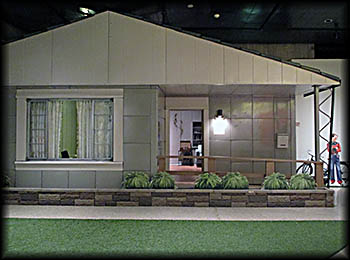
Lustrum House
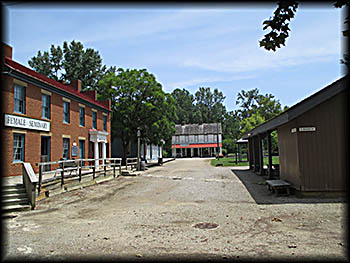
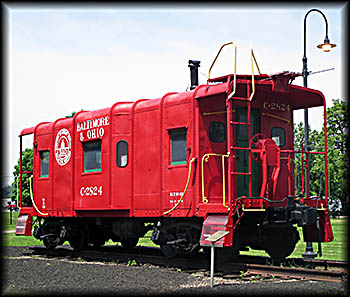
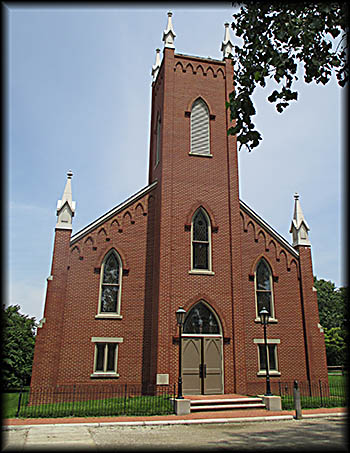
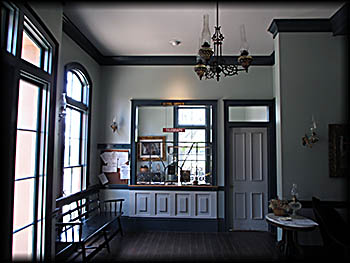
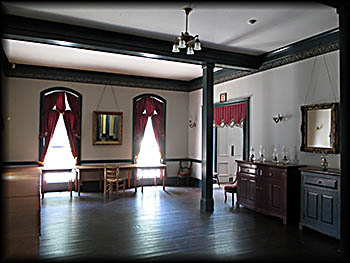

Unlike many “preserved” historic buildings I’ve visited, you can go through this one room to room and poke and prod at everything and anything you want to. You can open cupboards, drawers, and closet doors, peeking inside and even touching such artifacts such as old games and clothes. When a small child picked up the home’s rotary phone—which to him might as well have been from Mars—someone on the other end started to speak, or rather a recording did. A black and white Sylvania television played television clips from the 1950s. For my travelling companion, a Baby Boomer, the house brought back memories of her childhood, causing her to frequently utter, “Oh, I had one of these,” or “We had one of those!” Ah, nostalgia is a wonderful thing.
I saved what I wanted to see the most for last: Ohio Village. This, I must admit, disappointed me not because it lacked anything interesting but rather because everyone of its buildings and houses are completely reconstructed. Instead of saving and moving some of the many historic buildings across Ohio to this location, the Connection at some point in its history had decided instead to build one out of whole clothe.
I saved what I wanted to see the most for last: Ohio Village. This, I must admit, disappointed me not because it lacked anything interesting but rather because everyone of its buildings and houses are completely reconstructed. Instead of saving and moving some of the many historic buildings across Ohio to this location, the Connection at some point in its history had decided instead to build one out of whole clothe.